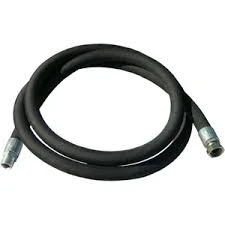air conditioner lines
Understanding Air Conditioner Lines A Guide to Efficient HVAC Systems
In modern homes and workplaces, air conditioning systems have become essential for maintaining a comfortable indoor environment. One of the critical components of any air conditioning (AC) system is its network of lines, which play a crucial role in the cooling process. Understanding the function and maintenance of these air conditioner lines can help homeowners ensure their systems operate efficiently and last longer.
Air conditioning units typically consist of two main components the indoor unit and the outdoor unit. The lines that connect these two parts are known as refrigerant lines. They are essential for moving refrigerant, a fluid that absorbs and releases heat, between the indoor evaporator coil and the outdoor condenser coil. Properly functioning refrigerant lines help maintain the optimal pressure and temperature of the refrigerant, facilitating efficient cooling.
Refrigerant lines usually consist of two different pipes the larger suction line and the smaller liquid line. The suction line carries low-pressure refrigerant vapor from the indoor unit back to the compressor in the outdoor unit. This line is typically insulated to prevent energy loss due to heat exchange. On the other hand, the liquid line carries high-pressure refrigerant from the outdoor unit to the evaporator coil indoors, where it expands and cools the indoor air.
air conditioner lines

One common issue that can affect air conditioner lines is refrigerant leaks. Over time, the seals and connections can wear out, leading to a loss of refrigerant. A decrease in refrigerant levels can diminish the system’s cooling capacity and efficiency, resulting in higher energy bills and inadequate cooling performance. Homeowners should regularly check for signs of leaks, such as ice buildup around the evaporator coils, hissing noises, or a noticeable drop in cooling efficiency.
Another factor to consider is the condition of the insulation on the refrigerant lines. Insulation serves to minimize energy loss and prevent condensation, which can lead to mold and mildew issues. Damaged or deteriorated insulation should be replaced promptly to maintain system efficiency. Moreover, it's essential to ensure that the refrigerant lines are properly secured and routed away from any potential interference, like sharp edges or heat sources, which can compromise their integrity.
Maintaining the air conditioner lines also involves regular inspections and cleaning. Dust and debris can accumulate on the outdoor condenser and evaporator coils, affecting the overall efficiency of the system. Homeowners should schedule routine maintenance checks with qualified HVAC professionals to ensure that the system is operating correctly and to address any potential issues before they escalate.
In conclusion, air conditioner lines are vital components that facilitate the efficient operation of any HVAC system. Understanding their structure and function can help homeowners maintain their air conditioning systems more effectively. Regular inspections, addressing leaks, and replacing damaged insulation are key practices to ensure long-term efficiency and comfort. Investing time and resources into maintaining these lines can lead to a more comfortable indoor environment and lower energy costs, making it a worthwhile endeavor for any homeowner. By prioritizing the health of their air conditioning systems, individuals can enjoy the comfort of a cool home while promoting energy efficiency and sustainability.
-
Ultimate Spiral Protection for Hoses & CablesNewsJun.26,2025
-
The Ultimate Quick-Connect Solutions for Every NeedNewsJun.26,2025
-
SAE J1401 Brake Hose: Reliable Choice for Safe BrakingNewsJun.26,2025
-
Reliable J2064 A/C Hoses for Real-World Cooling NeedsNewsJun.26,2025
-
Heavy-Duty Sewer Jetting Hoses Built to LastNewsJun.26,2025
-
Fix Power Steering Tube Leaks Fast – Durable & Affordable SolutionNewsJun.26,2025

